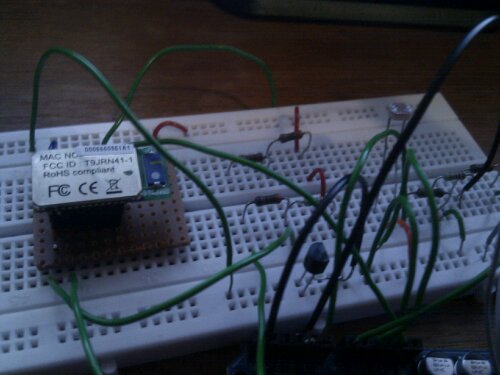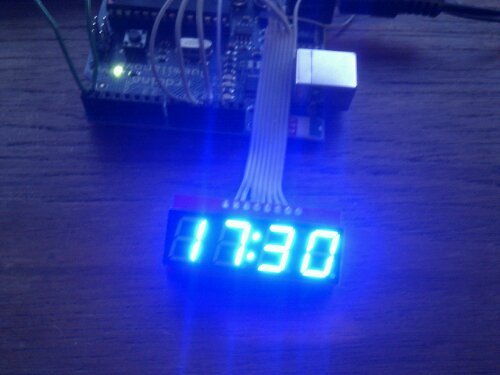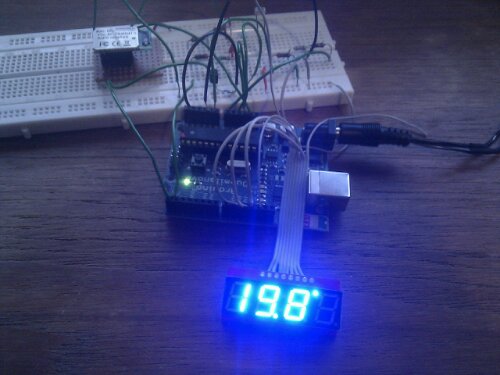So as promised here are the details and photos of the Arduino project I’ve been working on – a little late I know, but I’ve actually been concentrating on the project.
The project I’m working on is a clock, but as I mentioned before it’s not just any old clock. The clock is equipped with sensors for temperature, light level and battery level. It also has a bluetooth module for relaying this data back to my home server. This is the first part of a larger plan to build a home automation and sensor network around the house (and garden). It’s serving as kind of a test bed for some of the components I want to use as well as getting me started with the software.

As you can see from the photos this is a very basic prototype at the moment – although as of this weekend all the hardware is working as well as the software drivers. I just have the firmware to finalise before building the final unit.

The display is controlled via SPI and the input from the light sensor is used to turn off the display when it is dark in order to save power when there is no-one in the room. The display will also be able to be controlled from the server via a web interface.

Careful readers will note the absence of a real time clock chip to keep accurate time. The time is kept using one of the timers on the ATmega328p. Yes, before you ask this isn’t brilliantly accurate (it loses about 30 seconds every hour!), but I am planning to sync the time from the server via the bluetooth connection, so I’m not concerned.
The final version of will use an Arduino Pro Mini 3.3v (which I also got from Nicegear) for the brains, along with the peripherals shown. The Duemilanove shown is just easier for prototyping (although it makes interfacing with the RN-41 a little more difficult).
I intend to publish all the code (both for the firmware and the server) and schematics under Open Source licences as well as another couple of blog posts on the subject (probably one on the final build with photos and one on the server). However, that’s it for now.
Leave a Reply